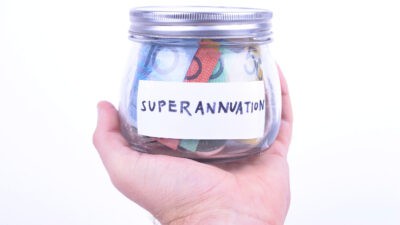As most investors would be aware, the ASX has had a fairly successful few months, at least until very recently. And that should bode very well for everyone's superannuation.
Up until the middle of last week, the S&P/ASX 200 Index (ASX: XJO) was up by around 3%, which is a great return for just over three months of waiting. Even after the recent market carnage, the ASX 200 remains 12.7% above where it was at the beginning of November last year.
But chances are your super fund's returns have come in even higher than those stellar gains of the Australian share market over the past few months.
Let's dig into why this might be the case.
A standard superannuation fund invests our money into a variety of different asset classes. Depending on one's risk profile, as well as the individual super fund, these asset classes and their respective allocations can vary.
But your typical 'balanced' super fund will allocate some of your money towards Australian shares, some towards international shares, then property, unlisted assets, bonds, and cash investments. Some may even use gold or other asset classes not mentioned here.
To illustrate, AustralianSuper's balanced portfolio currently splits contributions between international shares (28.5%), Australian shares (23.5%), fixed-interest bonds (14%), listed and unlisted infrastructure investments (10%), property (9.5%), cash (6%), credit investments (4.5%) and private equity (4%).
Most other mainstream balanced superannuation funds will probably offer a similar template. If you opt for a higher growth option rather than a standard balanced fund, you'll typically see a higher allocation towards shares at the expense of 'safer' investments like bonds and cash. For investors who instead choose a more conservative option, the exact opposite usually occurs.
Why your superannuation fund is probably outperforming the ASX
So why would your typical super funds have had a good chance at outperforming the already ascendant ASX share market in recent months? Well, because international shares have been outperforming even ASX shares over the same period.
As we mentioned above, the ASX 200 has returned around 13% since the beginning of November last year. But the flagship American index – the S&P 500 Index (SP: .INX) – is up almost 20% over the same period. The tech-heavy Nasdaq Composite Index (NASDAQ: .IXIC) has gained even more, with a rough 22% rise.
Japan's Nikkei 225 has gained over 25% as well, which is just ahead of the Euro Stoxx 50, up 21%.
Already international shares are handily outperforming the ASX 200 during the past four months or so.
But we also have to factor in our weak Australian dollar. Since the end of October, the Aussie lost around 1% of its value against the US dollar, and just this week hit a multi-year low.
Since international shares are not priced in Aussie dollars, any falls in our dollar make those assets more expensive here in Australia. And that's also good news for this component of our superannuation funds.
So do yourself a favour and check how your own superannuation fund has fared over the past four months. Chances are you'll like what you'll find.








